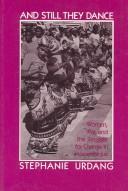Hardcover, 320 pages
English language
Published Jan. 1, 1988 by Monthly Review Press.

Hardcover, 320 pages
English language
Published Jan. 1, 1988 by Monthly Review Press.
Gaining Independence in 1975, Mozambique’s government proclaimed a progressive approach toward women’s liberation, seeing it as essential for the continued success of the revolution. Stephanie J. Urdang, who traveled often to Mozambique, examines women’s status there ten years later, talking with women in factories and fields, village co-operatives, and state farms. Urdang produces an inspiring yet sobering picture of how African women continued to struggle for their survival and their liberation. Drawing on scholarly research as well as first-hand investigation, And Still They Dance says much about the daily lives of women living in independent Mozambique after the revolution. Although they may have gained formal independence, these women still needed to overcome obstacles of class, gendered division of labor, underdevelopment, and—during the reign of South African apartheid—external aggression on the part of the South African-sponsored MNR proxy army. Urdang shows us a country rife with contradictions and tells the stories …
Gaining Independence in 1975, Mozambique’s government proclaimed a progressive approach toward women’s liberation, seeing it as essential for the continued success of the revolution. Stephanie J. Urdang, who traveled often to Mozambique, examines women’s status there ten years later, talking with women in factories and fields, village co-operatives, and state farms. Urdang produces an inspiring yet sobering picture of how African women continued to struggle for their survival and their liberation. Drawing on scholarly research as well as first-hand investigation, And Still They Dance says much about the daily lives of women living in independent Mozambique after the revolution. Although they may have gained formal independence, these women still needed to overcome obstacles of class, gendered division of labor, underdevelopment, and—during the reign of South African apartheid—external aggression on the part of the South African-sponsored MNR proxy army. Urdang shows us a country rife with contradictions and tells the stories of the women who continue to struggle on numerous fronts for a better life.